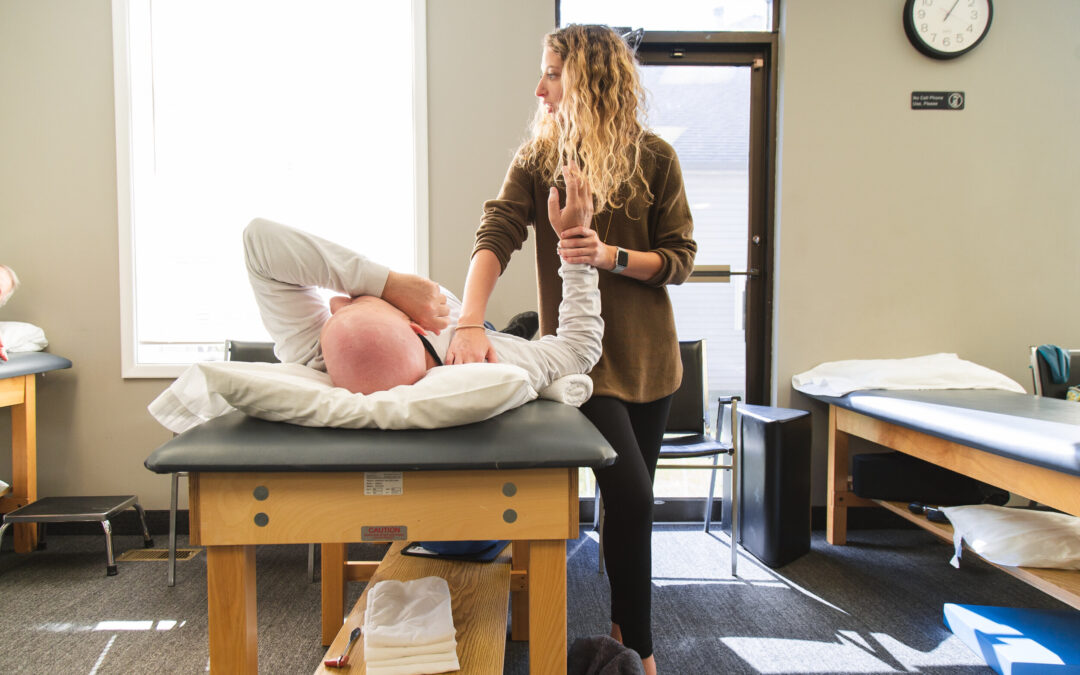Contents
The forearm is made up of a complex web of many moving parts. Not only does the forearm have the radius and ulna bones, but there are also many muscles and tendons connecting the elbow to the wrist. All of these different tissue work together to move the elbow, wrist and hand as a unit.
When the muscles or tendons in the forearm are damaged, they can cause a forearm strain. It’s also known as pulling a muscle and often causes pain in the hand, wrist and elbow. This is most common if you’re in an accident or if your muscles are being overly used or improperly used. Forearm strains can affect a number of people, including:
- Athletes
- Knitters
- Manual laborers
- Musicians
- People with computer-based jobs
Anyone who has a job or hobby that involves repetitive wrist or finger movements is more susceptible to a forearm strain. Let’s look at some common signs of a forearm strain as well as how to treat it.
Signs you may have a strained forearm
If you’re experiencing pain in your forearm, you may have strained the muscles or tendons in it. Here are some common signs and symptoms of a forearm strain:
- Redness or bruising along the forearm muscle
- Limited motion in your elbow, wrist or hand
- Muscle spasms in the forearm
- Aching pain between the elbow and wrist
- Swelling in the forearm
- Tenderness and pain when touching the affected area
- Stiffness in the forearm muscles
- Weakness in the forearm
- Numbness or tingling in the forearm and fingers
- Pain that gets worse during or after activities involving the forear
Forearm strains have different “grades” depending on their severity. Grade 1 is a mild forearm strain that doesn’t negatively affect your strength. Grade 2 is usually more painful and can cause muscle weakness. Grade 3 occurs when the forearm strain is so severe that it causes a muscle-tendon rupture. If you have a Grade 3 strain, you may require surgery.
However, not all forearm pain is caused by a strain. Ligament sprains, a pinched or compressed nerve, fractures, and rheumatoid arthritis can all cause forearm pain. For a formal diagnosis, talk to your health care provider about your forearm pain.
At-home treatments for a strained forearm
Mild forearm strains can be treated at home with a few simple methods. However, it’s important to give your forearm enough time to heal completely. It’s easy to re-strain your forearm if you push yourself before you’re fully healed. Here are a few ways you can help the healing process at home:
- Rest — Rest is an essential part of healing most types of injuries, including forearm strain. Avoid strenuous activities that may put stress on the forearm, and rest your arm regularly throughout the day. This can significantly reduce strain that may worsen your forearm injury.
- Ice — Putting an ice pack on your forearm for 15 to 20 minutes several times a day can offer temporary pain relief. In addition to numbing the general area for a while, cold can also help reduce swelling and inflammation in the injured tissue.
- Medication — Over-the-counter nonsteroidal anti-inflammatory drugs (NSAIDs) can temporarily help with pain and inflammation in your forearm. Your health care provider will likely recommend medications such as ibuprofen or naproxen. Follow the instructions on the bottle for dosage recommendations.
- Immobilization — If moving your forearm even a little bit is painful, you may want to use a splint or a sling to restrict your movement altogether. This forces you to rest your arm and can help you from accidentally overusing it and causing more pain.
These treatments can help mild forearm strains to improve. While rest is important at the beginning of your injury, as your arm improves, you can begin to do some simple exercises to strengthen your arm and help you return to normal. Be careful not to overdo these exercises, as re-straining your arm can make your injury worse. Here are a few simple exercises that may help you regain strength and mobility in your forearm:
- Tennis ball squeeze — Hold a tennis ball in your hand with your palm facing upward and your elbow at your side. Squeeze the ball in your fist and hold for several seconds. Do three to five reps and then repeat with the palm facing downward. As your muscles strengthen, you can increase the number of reps. If you feel any pain, stop the exercise or decrease your number of reps.
- Arm rotations — Hold your injured arm straight out in front of you. It should be parallel to the floor, and your palm should be facing upward. Make a fist; then turn your fist over so you can see the back of your hand. Start with three to five reps and increase as your muscles strengthen. You can hold a light dumbbell in your fist as your forearm muscles strengthen, but if you feel any pain, stop the exercise or decrease your number of reps.
- Wrist extension and flexion extension — Hold your injured arm straight out in front of you. It should be parallel to the floor, and your palm should be facing downward. Bend your wrist downward and hold for several seconds. Return to the starting position and repeat for three to five reps. Switch to your palm facing upward and repeat. You can increase the number of reps as your arm strengthens, but if you feel any pain, stop the exercise or decrease your number of reps.
With these exercises, it’s essential to start small and be patient. Mild forearm strains usually take around a week or two to heal, while moderate strains may take up to six weeks to heal completely. Pushing yourself too hard can result in re-straining or worsening the injury, so be sure to listen to your body and stop exercising before you begin to feel pain.
When to see a physical therapist for a strained forearm
Mild forearm strains can usually heal with rest and strengthening exercises, but if your strain isn’t healing or is getting worse, see your health care provider. If your forearm strain has caused a muscle-tendon rupture, your doctor will recommend surgery.
For moderate strains, however, physical therapy can help you heal and get back to your regular level of physical activity. Here are a few treatment methods your physical therapist may recommend:
- Manual therapy — Manual therapy is one of the most common types of physical therapy for forearm strains. With this method, your physical therapist will use hands-on techniques with the goal of stretching and strengthening the muscles and tissue in your forearm. Manual therapy is a gentle, noninvasive mode of therapy that can help reduce pain levels and increase mobility in your elbow, wrist and hand. At Lattimore PT, 30 of our physical therapists have a Certification in Orthopedic Manual Physical Therapy (COMT). This is an additional type of physical therapy training that goes above and beyond standard manual therapy practices to utilize the most effective techniques.
- Targeted exercises — Your physical therapist will be able to assess your condition and limitations to recommend specific exercises to help you the most. They can also advise you on proper form and technique to ensure that you don’t damage your tissue further. Your physical therapist will work with you as you improve to provide more rigorous exercises and stretches with the goal of helping you regain full mobility without pain.
If your forearm strain is preventing you from doing the things you love, physical therapy may be the answer. Our expert clinicians at Lattimore PT are highly trained in physical therapy methods that can target your pain to help you get back to a full, active lifestyle.
If you’re ready to take control of your forearm pain, contact our team today for more information or to schedule an initial appointment.


